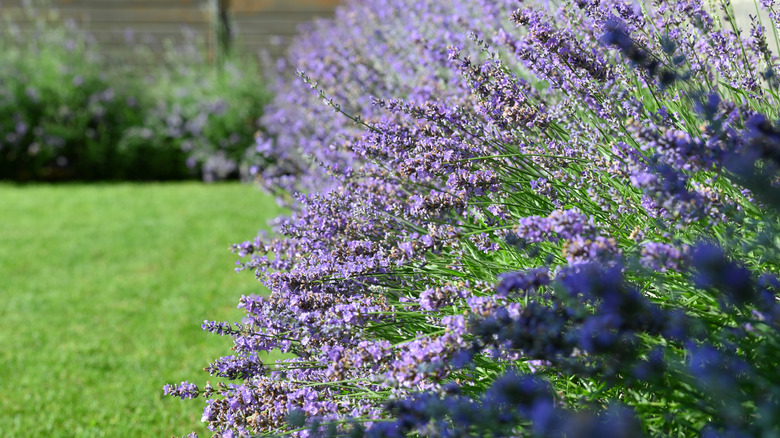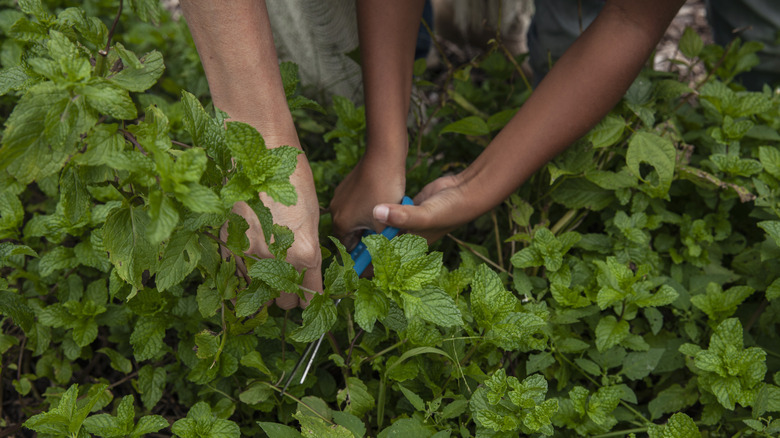The Popular Herb You Should Avoid Planting Next To Lavender At All Costs
Lavender (Lavandula) is an in-demand plant for a reason. Found in garden landscapes and potted containers alike, this versatile perennial herb boasts many aesthetic, culinary, and medicinal benefits. The light fragrance produced by its dainty florets and leaves remains a coveted ingredient in perfumes and essential oils, and it has been used to treat anxiety and stress. Dried lavender can even add a nice ornamental pop to wreaths, potpourris, and other floral arrangements. However, before you start mapping out the perfect location for lavender in your garden, it's important to take note of the one herb that does not mix well with this fragrant perennial.
Mint (Mentha) is another well-liked and ubiquitous perennial herb. Known for its dark green leaves and refreshing scent, the plant doubles as a defense against pests while also attracting pollinators, including butterflies and bees. On paper, these two plants seem like the ideal pair due to their numerous similarities. Both are part of the Lamiaceae family of flowering plants. And, in addition to their intoxicating scents, both plants can be used in a wide variety of ways, fresh or dry, ranging from herbal remedies like teas and aromatherapy to cosmetic products like soaps and lotions. In reality, though, lavender and mint need two completely different growing conditions in order to thrive. While it may be tempting to include the two herbs in your garden plans, planting them next to each other might bring unnecessary stress to your lavender.
Why mint and lavender do not mix
To understand why mint and lavender are not compatible, it's important to compare their specific care needs when it comes to soil and watering. Mint does well in slightly acidic soils that are moist and full of nutrients. Native to temperate climates across countries from Asia to Africa, wild mint usually grows near wet environments like ponds, marshes, and rivers, which explains the plant's preference for damp soil. Mint varieties generally thrive in USDA Hardiness Zones 3 though 11; it is advised to provide up to 2 inches of water weekly, and to increase that amount during extreme heat.
Meanwhile, since lavender is native to the Mediterranean region and thrives in USDA Zones 5 through 9, it prefers dry and sandy soil that is well-drained. Lavender can't stand sitting in waterlogged soil, and will eventually develop root rot. That means that the weekly watering schedule required by mint will eventually spell doom for your drought-tolerant lavender. Beyond their wildly divergent soil and water needs, mint is a notoriously aggressive grower. Its horizontal roots spread outwards in the soil, and fast, gobbling up any available space, light, and nutrients. If left to its own devices, mint will take over your garden. Most plant guides suggest growing mint in its own container if you wish to have more control over its spread.
As an alternative, it's best to surround lavender with companion plants that also thrive in dry, sandy conditions, like rosemary (Salvia rosmarinus) and sage (Salvia officinalis). Other plants that pair nicely with lavender include allium and marigold (Tagetes). As for mint, if you do want it add it to your garden beds rather than its own separate pot, it pairs well with oregano (Origanum vulgare) as well as crops like tomato and peas.

